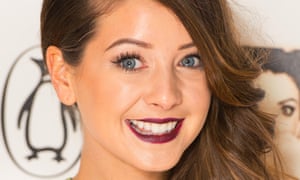NDM Offers Media Institutions Different Ways Of Reaching Audiences, Consider How And Why Media Institutions Are Using These Techniques? (48)
New and digital media have allowed for Media institutions to reach their audiences much more differently than ever before. There has been a massive change in how institutions can engage with their audiences and also how the audience can interact with the institution. Industries like the newspaper industry and institutions like Netflix show how they have adapted to the times and used NDM techniques to keep up with their audiences.
With the rise of NDM and much more smarter technology being introduced into our every day lives, institutions must adapt with these new technologies in order to keep their audiences active and to also survive as a business. A prime example of how an institution has done this is the newspaper industry. NDM has somewhat "Forced" traditional news industries to go online, thus creating a massive decline in traditional print newspapers. As more and more people now have access to internet on the go and whenever it enabled news to be accessed on the go and whenever, this means that news industries are able to reach out to their audiences with breaking news live as it happens. Although as the news industry has now become a dominant industry online, its traditional values are now dead and its key point of making revenue is gone. The only way for news industries to make revenue now is by online advertising, and by industries doing this it can degrade the quality of their websites and lay out of news. Also, news industries are using techniques like "clickbait" (false news titles) in order to gain audiences attention in order to gain more page views and overall more revenue from their adverts.
Although, something that has been introduced in the news industry are "paywalls". A Paywall is when audiences must pay a subscription fee in order to gain full access to news online, like netflix. Paywalls is something that should've been introduced when news switched to an online platform but industries believed that moving online for free will cause an increase in print sales, they were wrong. A Paywall is when audiences must pay a subscription fee in order to gain full access to news online, like netflix. David Simon an american TV writer believes that "Paywall is needed as quality of news is dropping." Paywall is how news industries can make revenue like they used to and audiences then benefit from greater quality news overall. Institutions will then gain greater perception from audiences. David Simon an american TV writer believes that "Paywall is needed as quality of news is dropping."
Furthermore, NDM has also caused a decline in DVD's, we could also be at a time where broadcast TV may start having a decline. The reason for this is because of the uprising of Netflix. Netflix is an american business which started with a subscription based DVD rental company. In 2005, 35,000 DVD's were available and a total of 1 million DVD's were shipped to audiences. This was the main method of reaching audiences at the time, but after shipping 1 billion units in 2007, Netflix believed that it was time to change its techniques. After releasing its on demand service, DVD sales rapidly dropped and eventually took big businesses like block buster out of business. They're annual revenue went to $7b. Its also predicted that by 2020 netflix will be 145 of total viewing.
Furthermore, NDM has also caused a decline in DVD's, we could also be at a time where broadcast TV may start having a decline. The reason for this is because of the uprising of Netflix. Netflix is an american business which started with a subscription based DVD rental company. In 2005, 35,000 DVD's were available and a total of 1 million DVD's were shipped to audiences. This was the main method of reaching audiences at the time, but after shipping 1 billion units in 2007, Netflix believed that it was time to change its techniques. After releasing its on demand service, DVD sales rapidly dropped and eventually took big businesses like block buster out of business. They're annual revenue went to $7b. Its also predicted that by 2020 netflix will be 145 of total viewing.






